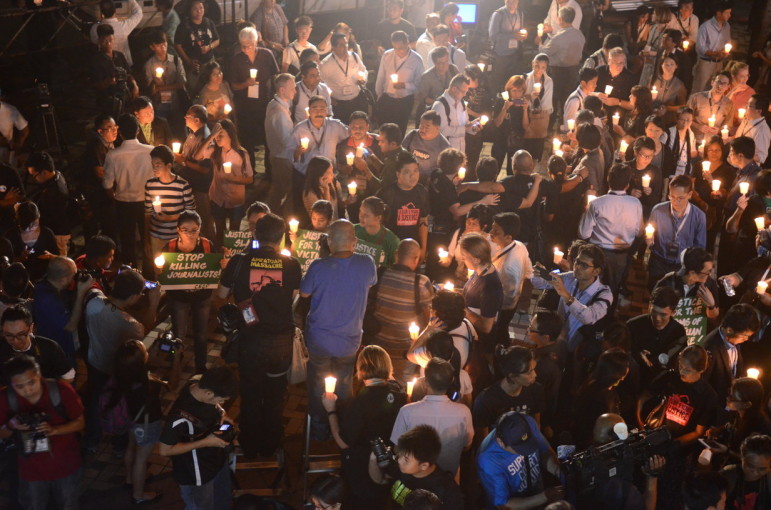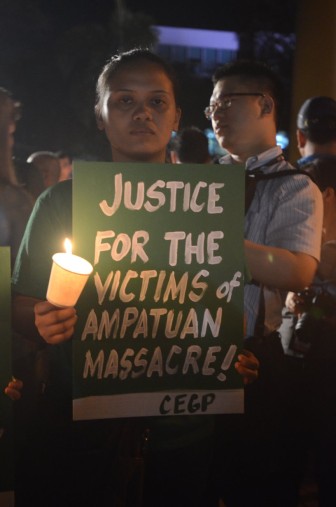
Karen Chang
.
Edidha Diamzon was too tired for tears as she remembered her husband at a vigil for victims of the Maguindanao massacre.
Diamzon had sought justice over the local journalist’s death since his murder five years ago. She and other surviving family members are still waiting.
At least 57 defenseless civilians, 32 of them journalists, were killed in the largest massacre of journalists in the country since the Committee to Protect Journalists started keeping records in 1992. To date, 197 people are accused of taking part in the murders, including eight members of the powerful Ampatuan local political family. No convictions have been made.
Filipino journalists and activists calling for an end to impunity gathered at EDSA Shrine in Manila on November 23 to pray for victims of the Maguindanao massacre and demand justice.

Karen Chang
Maguindanao massacre vigil in Manila, Philippines.
The massacre sent a chilling massage to journalists. “A report said that it only cost five thousand (pesos) to hire a killer to kill journalists…for younger journalists, there is of course some fear that [reporting] can cost their life,” said Bong Erbnando, a reporter with Reuters who covers disaster and conflict in the Philippines.
According to a survey conducted by the International Federation of Journalists, young reporters in the Philippines feel unsafe. Many journalists are intimidated, harassed and threatened while reporting – and this has led many to feel that they need to self-censor their stories.
“We asked them do they feel if you say something … you will get killed for it? Many of them go ‘yes’,” said Mike Dobbie, who led the International Federation of Journalists mission to the Philippines.
“When you kill journalists, the journalists alive are put under pressure, so [the media isn’t able] to provide the powerful scoop that is necessary in a democracy,” he added.
Top officials in the Philippines vowed earlier to deliver justice. But experts believe that because the investigation has dragged on for five years and convictions have yet to be made, the lack of accountability shows that the justice system in the Philippines is broken.
“Law enforcement doesn’t happen when a murder takes place; the police [don’t] investigate the murders,” said Dobbie. The main problem, he said, is the growing culture of impunity.
Even bystanders are at risk. Four witnesses to the massacre were murdered before they could give their testimony.
Many surviving family members of the slayings, like Diamzon, are forced to care for children and family members alone – and without any government compensation.
Diamzon says she remains hopeful that justice will be delivered for her husband.
But she also knows that until it is realized, the Filipino media will be forced to remain silent on exposing other injustices around the country.
